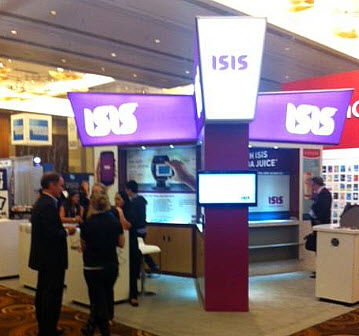Denny |
November 19, 2013
This, according to the execs at both The Weather Channel as well as at Criteo.
Execs from both The Weather Company – the operator of The Weather Channel – and from Criteo – an adtech platform – believe that as much as mobile marketing is growing in popularity and presents considerable opportunity for monetization of a website or an app, the ads that are used over this channel leave a great deal to be desired.
These two execs have agreed that it is primarily the format of the ads that needs to improve.
They have stated that the mobile marketing ad format continues to be riddled with flawed and time will require it to improve. That said, this is not quite an encouraging statement considering the fact that the channel has been heavily used, worldwide. It is also a rather grim statement considering that Criteo is a considerable buyer of m-commerce ads, and the Weather Channel is a large seller due to the great popularity of its app.
That said, despite the current statements, they do feel that mobile marketing will be the place to be in the long run.
 In a recent interview with a business publication, Greg Coleman, the president of Criteo, said “Do mobile ads suck? Maybe, maybe not.” He added that if you are able to encourage a viewer to click an ad, which he called, making an “ad dance”, then you can assume “that it doesn’t suck.”
In a recent interview with a business publication, Greg Coleman, the president of Criteo, said “Do mobile ads suck? Maybe, maybe not.” He added that if you are able to encourage a viewer to click an ad, which he called, making an “ad dance”, then you can assume “that it doesn’t suck.”
In order to be able to make better mobile marketing ads, according to Coleman, there is a requirement for the industry to look into the ads that have been made by curatives that have developed a smartphone based background and who have what is referred to as Coleman as the mobile “DNA”.
At the same time, The Weather Company’s chief global revenue officer, Curt Hecht, has expressed a different angle of view regarding the direction that mobile marketing was taking. In his opinion, considering the way that things currently are, the methods that are used for purchasing and selling ads over smartphones and tablets are what he called “a complete mess”. For a company that sells ad space on its apps, this isn’t the best type of statement to make.
The joint venture from T-Mobile, Verizon, and AT&T has now finally launched throughout the U.S.
The approach of the Isis mobile payments wallet launch was first reported by Mobile Commerce Press from the Money2020 event, and now the day has finally come in which the service has rolled out across the United States so that users will be able to use their devices to pay for their purchases.
Now the market is wondering whether or not Isis will be any more successful than its many competitors.
Although there are around 40 handsets that are considered to be compatible with Isis mobile payments, they still represent a considerable minority of the devices currently owned by Americans. This has generated significant skepticism as to whether or not the carrier backed venture will have any more luck than its primary competition, Google Wallets, which remains primary little known and little used.
Furthermore, there are many other barriers to adoption presented by this mobile payments method.
 Even among consumers who do have the right type of smartphones – which are exclusively Android based and require specific types of technology – using this mobile payments system isn’t merely a matter of obtaining the wallet app. Though an app is required from the Play Store in order to use the service, there is also a physical update that must be made to the device before purchases can be made.
Even among consumers who do have the right type of smartphones – which are exclusively Android based and require specific types of technology – using this mobile payments system isn’t merely a matter of obtaining the wallet app. Though an app is required from the Play Store in order to use the service, there is also a physical update that must be made to the device before purchases can be made.
In order to use the “contactless” mobile payments from Isis, the smartphone user with the right kind of Android device will need to head to AT&T, T-Mobile, or Verizon Wireless in order to obtain an “enhanced” SIM card in order to improve the security on the device so that it will be possible to safely use the service. Once that card has been activated, then credit and debit cards can be added to the digital wallet, and the consumer can find retailers, restaurants, and other locations which accept this form of transaction.
The number of shoppers across the United States who will actually choose to make this effort to select Isis mobile payments over others – or traditional card and cash-based methods – has yet to be seen.
 In a recent interview with a business publication, Greg Coleman, the president of Criteo, said “Do mobile ads suck? Maybe, maybe not.” He added that if you are able to encourage a viewer to click an ad, which he called, making an “ad dance”, then you can assume “that it doesn’t suck.”
In a recent interview with a business publication, Greg Coleman, the president of Criteo, said “Do mobile ads suck? Maybe, maybe not.” He added that if you are able to encourage a viewer to click an ad, which he called, making an “ad dance”, then you can assume “that it doesn’t suck.”
 Even among consumers who do have the right type of smartphones – which are exclusively Android based and require specific types of technology – using this mobile payments system isn’t merely a matter of obtaining the wallet app. Though an app is required from the Play Store in order to use the service, there is also a physical update that must be made to the device before purchases can be made.
Even among consumers who do have the right type of smartphones – which are exclusively Android based and require specific types of technology – using this mobile payments system isn’t merely a matter of obtaining the wallet app. Though an app is required from the Play Store in order to use the service, there is also a physical update that must be made to the device before purchases can be made.